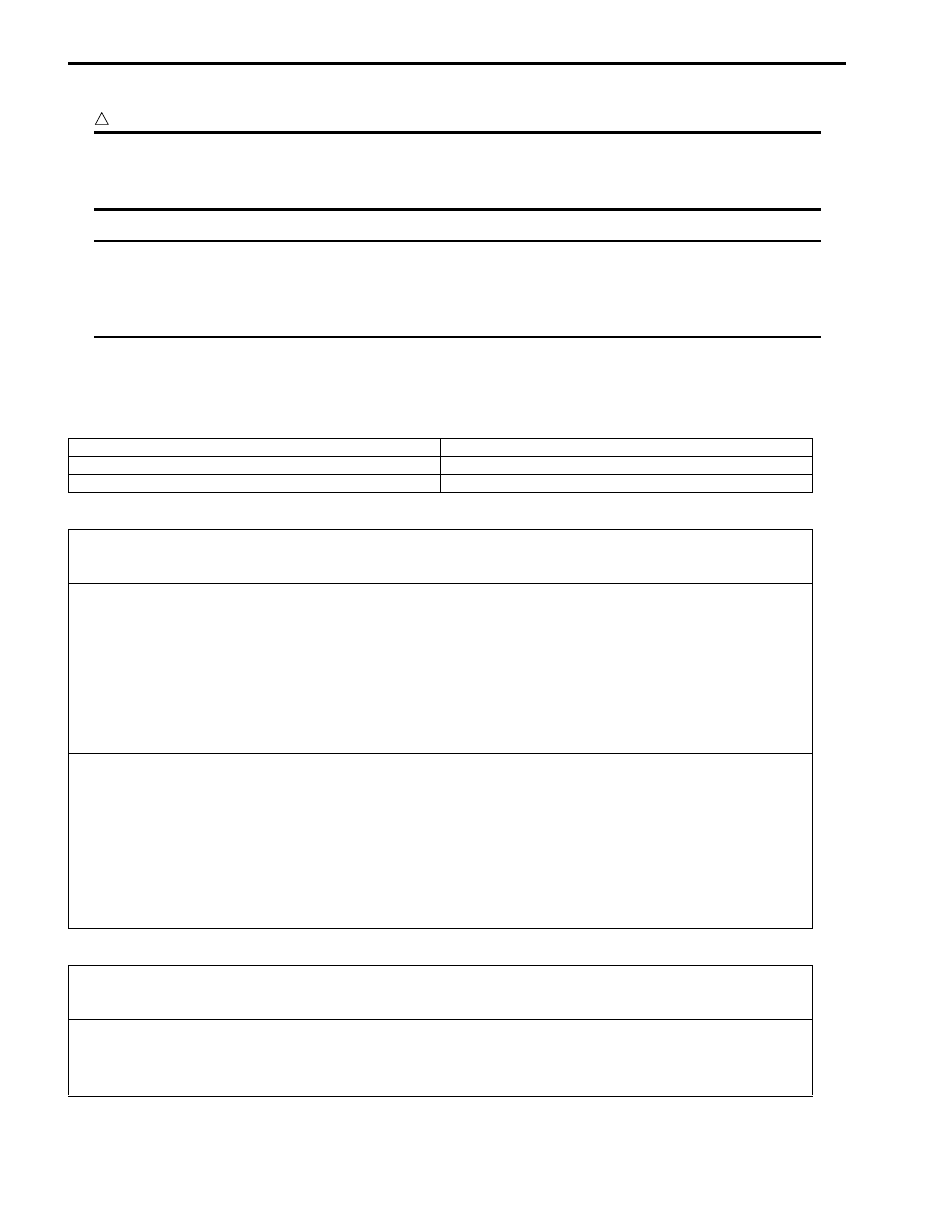Suzuki Grand Vitara JB416 / JB420 / JB419. Manual - part 95

1A-327 Engine General Information and Diagnosis: For Diesel Engine Model
DTC P0571: Brake Light Switch Circuit
S6JB0A1124120
CAUTION
!
• This fault may appear if the wiring harness has been damaged.
Follow the procedure described in “Electrical Circuit Inspection Procedure in Section 00”.
• This check enables the condition and the conformity of the engine wiring harness to be checked.
NOTE
• Conditions for applying fault finding procedures to stored faults:
The fault is declared present after the brake pedal is depressed, or during a road test.
• If the fault is present, the cruise control/speed limiter is deactivated.
• Use service wire for all operations on the ECM connectors.
Wiring Diagram
For wiring circuit and connector number, refer to “A-5 Engine and A/C Control System Circuit Diagram (DSL) in
Section 9A”.
Detecting Condition
Troubleshooting for D1: Open circuit or short circuit
Troubleshooting for D2: Inconsistency of signal
Displaying on SUZUKI scan tool
Detecting condition
D1
Open circuit or short circuit
D2
Inconsistency of signal
Check the connections of the brake lamp switch.
Check the condition and adjustment of the brake lamp switch.
Repair if necessary.
Check the conformity of the brake lamp switch:
• Brake pedal released:
– Continuity between “E67-1” and “E67-2” terminals of brake lamp switch.
– Infinite resistance across “E67-3” and “E67-4” terminals of brake lamp switch.
• Brake pedal depressed:
– Infinite resistance across “E67-1” and “E67-2” terminals of brake lamp switch.
– Continuity between “E67-3” and “E67-4” terminals of brake lamp switch.
Replace the switch if necessary.
Check the condition of “STOP” fuse on the junction block assembly.
Replace the fuse if necessary.
Check the feeds to the switch:
• Between “E67-2” wire of the brake lamp switch connector and “E82-20” terminal of BCM connector
• Between “E67-4” wire of the brake lamp switch connector and “E33-6” wire of main relay mounting connector
Replace the switch if necessary.
Check the continuity and insulation of the following connections:
• Between “E67-1” wire of brake lamp switch connector and “E66-28” terminal of ECM connector
Repair if necessary.
Check the connections of the brake lamp switch.
Check the condition and adjustment of the brake lamp switch.
Repair if necessary.
Check the continuity and make sure there is no interference resistance on the following connection:
• Between “E67-1” wire of brake lamp switch connector and “E66-28” terminal of ECM connector
Repair if necessary.
If the fault is still present, substitute a known-good ECM and recheck.